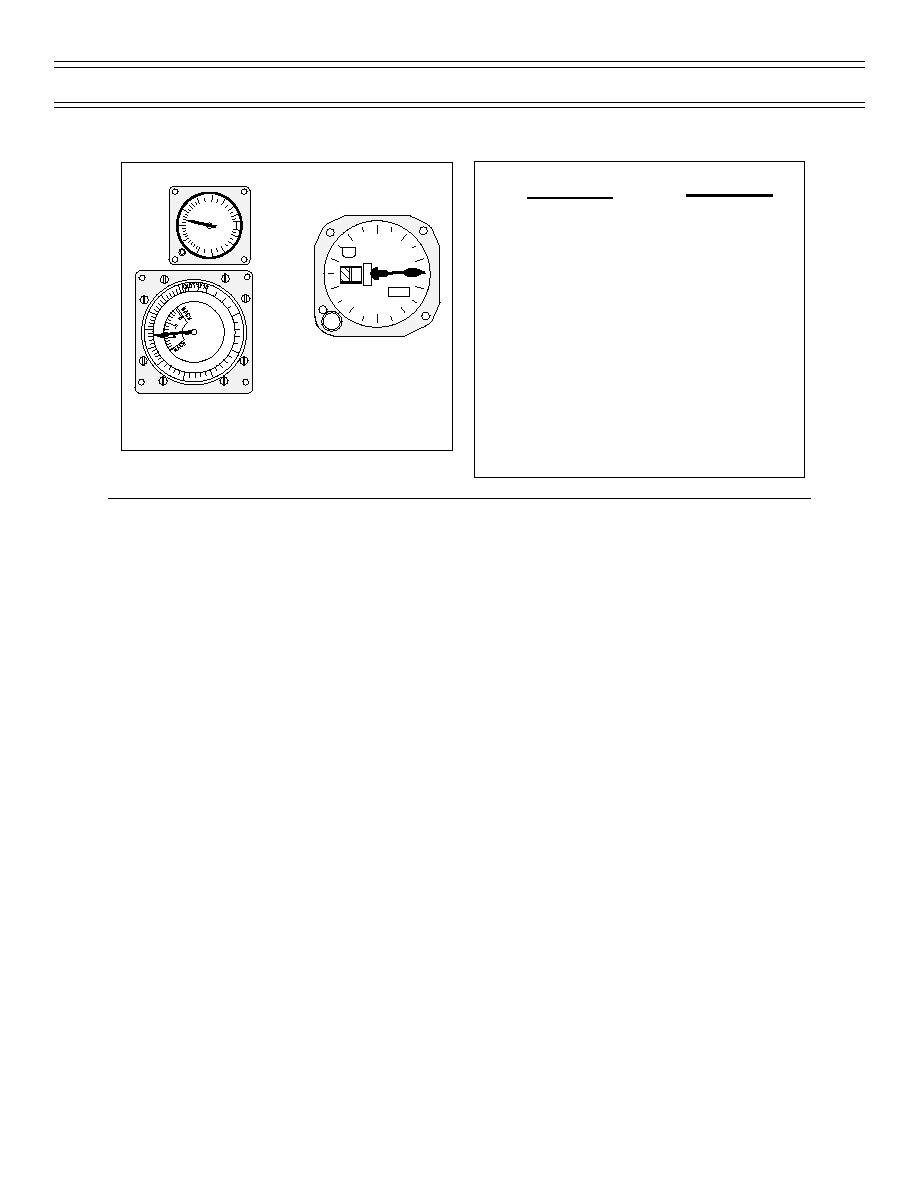
UJPT BIFP-09 & E2-C2 BIFP-05
Instrument Failures
Sg 5, fr 3
Sg 5, fr 2
ANGLE
FLIGHT
OF ATTACK
CONDITION
1 2
.5 FT/MIN 4
MRT Climb
0 X1000 6
4
.5
0
0 to 30,000 ft .......................................................... 10
12
9
1
CODE
30,000 to 40,000 ft ................................................. 11
OFF
ALT 2
8
MAX Endurance
2
0
3
3
Any altitude ................................................... 14
7
2992
5
4
MAX Range ........................................................ 12-13
6
50
5
10
Penetration
40
Speed brakes out, 80% rpm
15
4,000-6,000 ft fpm descent .................................... 11
30
20
Landing
Gear extension .......................................................
13
Flap extension ........................................................
13
GCA pattern (clean) ...............................................
13
GCA pattern (land config) ......................................
10
PITOT STATIC MALFUNCTIONS
GCA pattern (final) .................................................
17
Carrier pattern and approach .................................
17
4.
Check other pitot static systems
5.
Land as soon as practicable
B.
Barometric altimeter failure 1.8.1.7.9.2
1.
Check pitot hear "on"
2.
Report failure to ATC
3.
Use cabin pressure altimeter (up to 25,000 MSL)
4.
Use radar altimeter (below 5,000 AGL)
5.
Suspect errors in IFF altitude
6.
Cross check other pitot static instruments
7.
Land as soon as practicable
CAUTION: Remember to add estimated elevation to radar altimeter to
approximate MSL altitude.
CAUTION: Be cautious in high or uneven terrain regions.
CAUTION: To use cabin pressure altimeter above 5,000 MSL, cockpit will
have to be depressurized. Avoid depressurizing above 25,000 MSL.
Page 9-11
(03-97) Original



 Previous Page
Previous Page
